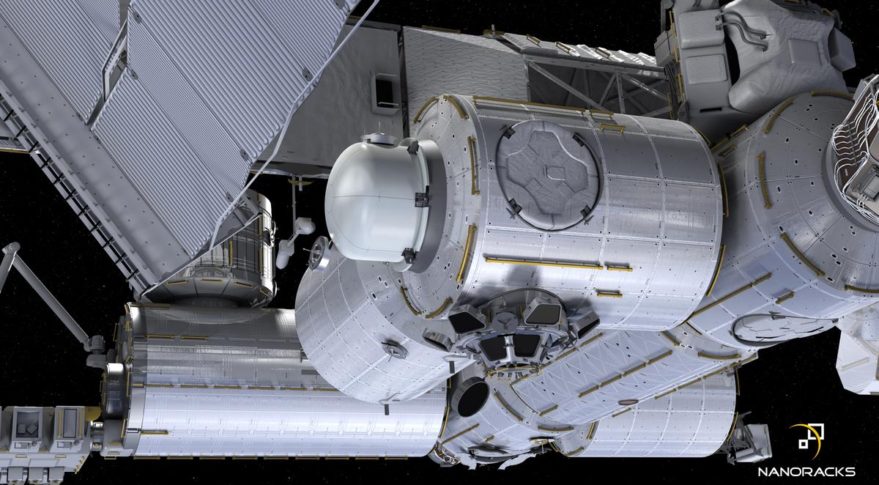NanoRacks Raises Funding for Commercial Airlock Module

SYDNEY — NanoRacks announced Oct. 3 that it had raised an undisclosed amount to support development of a commercial airlock module for the International Space Station.
NanoRacks said that Space Angels led the bridge round investment in the Houston-based company. Formerly known as Space Angels Network, Space Angels provides early-stage funding to companies through its members, individual accredited investors.
The undisclosed funds will be used for completing a commercial airlock module that NanoRacks plans to install on the ISS in 2019. "This investment will expedite our production, and it's wonderful to have Space Angels invested in this landmark program to enable the future of commercial space," Jeff Manber, chief executive of NanoRacks, said in a statement.
NanoRacks signed an unfunded Space Act Agreement with NASA in 2016 to develop the airlock, which will handle satellite deployments and other experiments that today use the airlock in the Kibo module.
"The reason we want our own airlock is this airlock is going to be five times bigger than the current airlock, and it's going to be far more commercial," Manber said in a Sept. 27 presentation at the International Astronautical Congress in Adelaide, Australia.
In addition to satellite deployments and experiments, he said the module will be commercial "real estate" on the station, with the ability to mount payloads on its exterior. "It's getting us more into the real estate business and space station operations," he said.
Manber said the module was on track to launch in 2019, carried to the station in the trunk of a SpaceX Dragon cargo resupply spacecraft. A formal manifesting of the payload on a resupply flight is now being finalized, he said, while the airlock itself is being manufactured.
Get the Space.com Newsletter
Breaking space news, the latest updates on rocket launches, skywatching events and more!
He added the company was working to sign up customers for the airlock soon. "We expect to sign our first few commercial contracts this year," he said. "We're in final negotiations with a range of governments and commercial organizations."
NanoRacks has long-term ambitions to develop its own commercial station, and is part of the Ixion partnership with Space Systems Loral and United Launch Alliance to study refitting upper stages as habitation modules under a NASA Next Space Technologies for Exploration Partnerships (NextSTEP) program.
"NanoRacks has launched hundreds of payloads to the International Space Station, is currently building the first commercial airlock, and with Ixion the company plans to build and operate their own commercial space stations," Chad Anderson, chief executive of Space Angels, said in the statement about the funding round. "We're excited to partner with this incredibly experienced and passionate team that is doing so much to enable our future in space."
"We are moving rapidly into knowing when we can deploy our first commercial module," Manber said in his conference presentation. "NASA could not be more open-minded and helpful to us, and we fully anticipate very good results, making NASA comfortable that you can repurpose an upper stage and still allow NASA astronauts to be near the module."
This story was provided by SpaceNews, dedicated to covering all aspects of the space industry.
Join our Space Forums to keep talking space on the latest missions, night sky and more! And if you have a news tip, correction or comment, let us know at: community@space.com.

Jeff Foust is a Senior Staff Writer at SpaceNews, a space industry news magazine and website, where he writes about space policy, commercial spaceflight and other aerospace industry topics. Jeff has a Ph.D. in planetary sciences from the Massachusetts Institute of Technology and earned a bachelor's degree in geophysics and planetary science from the California Institute of Technology. You can see Jeff's latest projects by following him on Twitter.










